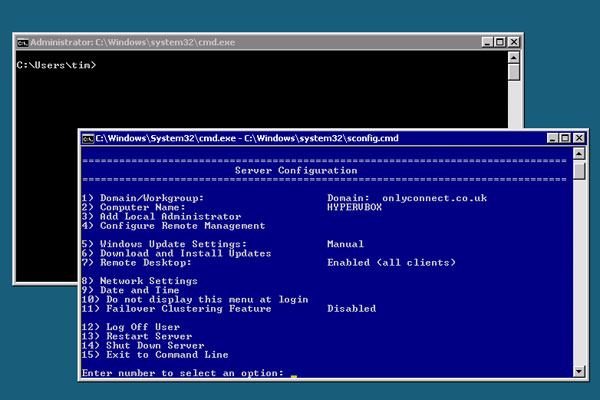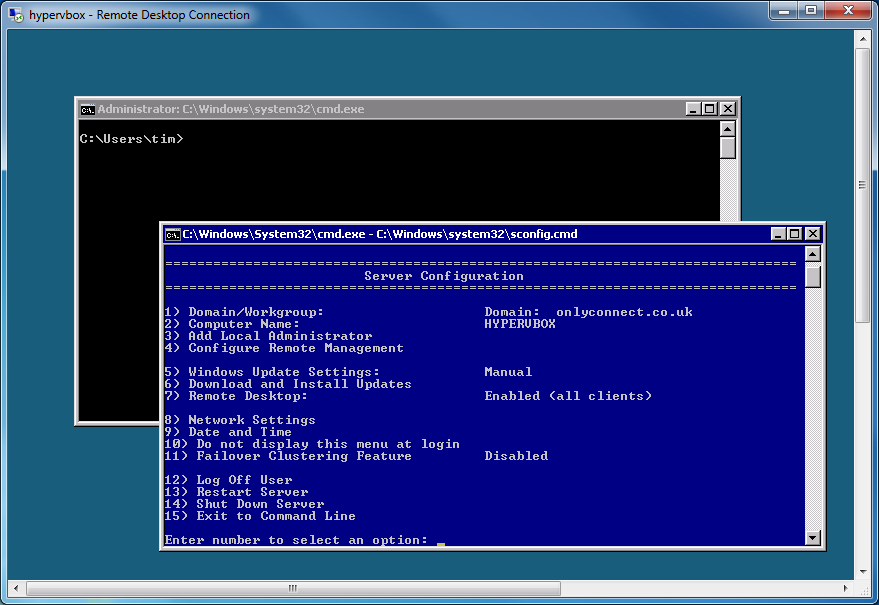Microsoft Hyper-V Server 2008 R2 review
Microsoft is determined to keep the pressure on the established virtualisation players and with Hyper-V R2 has added some crucial features. We see how it fares in this review.

Hyper-V Server 2008 R2 works well at a price that can't be beaten. Strong new features in Hyper-V Server R2 are spoilt only by lack of attention to management issues, both from the command line and with remote tools but it’s still a great deal for Windows users.
Hyper-V Server 2008 R2 is an edition of Server 2008 Core with one feature only: the ability to host virtual machines. Although it is a free offering, it actually makes sense to run a stripped-down host operating system in this context, for security, for performance, and to keep the host as generic as possible.
There is a strong industry trend towards virtualisation, for several excellent reasons. One is cost and efficiency. Consolidation of several physical servers into one means that hardware resources are more fully used. Another benefit is easy migration. The small print for Microsoft servers, for example, says that backup and restore is only fully supported when the hardware is the same. This is often unrealistic with physical servers, but by its very nature, virtualised hardware will be the same regardless of the physical machine.

Get used to it: there is no friendly GUI, just this command-line for managing Hyper-v Server.
Additionally, upgrading a server that needs more power goes from a painful migration experience to something that is near-trivial.
Virtualisation also ties in with another trend that of cloud computing. Once servers are virtualised, it's possible to move them to and from cloud providers.
Hyper-V was new in Windows Server 2008. The company is trying to catch up with well-established competitors, particularly VMware, which has more advanced features as well as a strong hold on the market. Hyper-V relies on a hardware hypervisor, a virtualisation feature of the CPU, which means it requires a processor that supports Intel VT or AMD-V, as well as hardware Data Execution Prevention. Notoriously there are many quite recent Intel processors that don't support this so check your hardware carefully. It is 64-bit only, though guests can be 32-bit or 64-bit.
Get the ITPro daily newsletter
Sign up today and you will receive a free copy of our Future Focus 2025 report - the leading guidance on AI, cybersecurity and other IT challenges as per 700+ senior executives
-
 Westcon-Comstor and Vectra AI launch brace of new channel initiatives
Westcon-Comstor and Vectra AI launch brace of new channel initiativesNews Westcon-Comstor and Vectra AI have announced the launch of two new channel growth initiatives focused on the managed security service provider (MSSP) space and AWS Marketplace.
By Daniel Todd Published
-
 Third time lucky? Microsoft finally begins roll-out of controversial Recall feature
Third time lucky? Microsoft finally begins roll-out of controversial Recall featureNews The Windows Recall feature has been plagued by setbacks and backlash from security professionals
By Emma Woollacott Published
-
 The UK government wants quantum technology out of the lab and in the hands of enterprises
The UK government wants quantum technology out of the lab and in the hands of enterprisesNews The UK government has unveiled plans to invest £121 million in quantum computing projects in an effort to drive real-world applications and adoption rates.
By Emma Woollacott Published